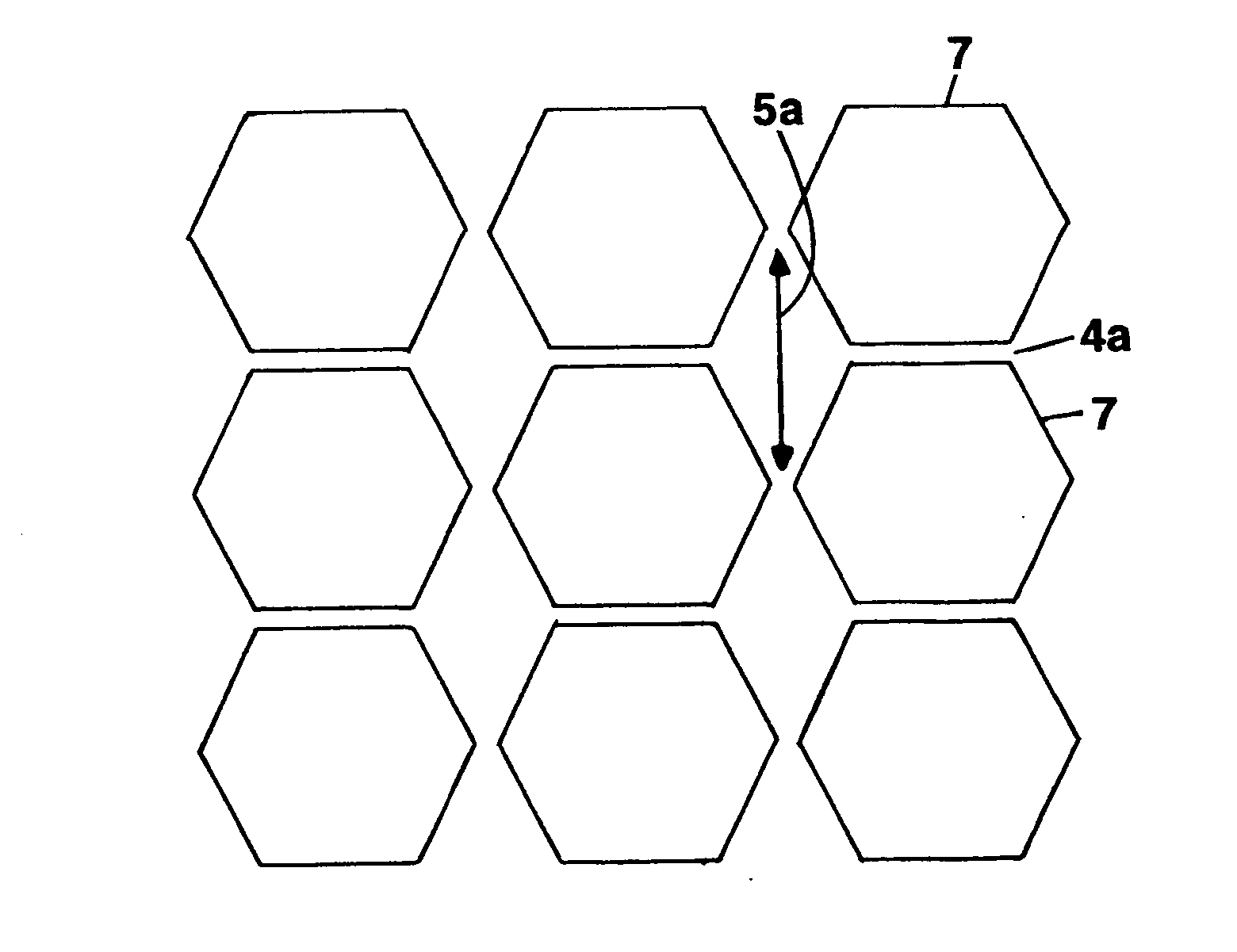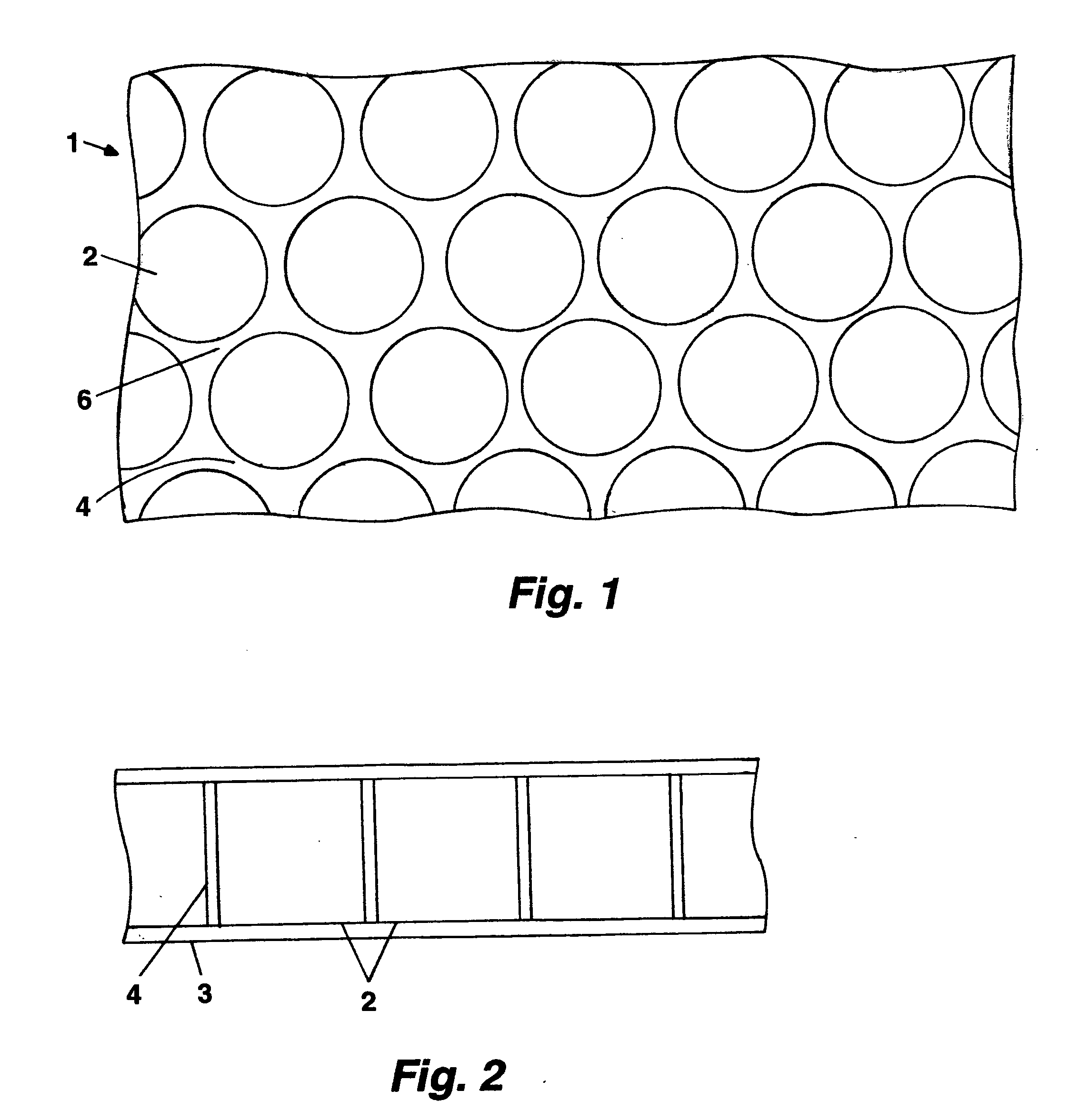Energy saving honeycomb having enhanced strength
- Summary
- Abstract
- Description
- Claims
- Application Information
AI Technical Summary
Benefits of technology
Problems solved by technology
Method used
Image
Examples
Embodiment Construction
[0004]An injection molding method of producing a honeycomb body involves introducing an injection moldable polymer into a mold having a two-dimensional array of parallel pins separated from each other in a particular manner, forming inter-cell reinforcement volumes between honeycomb cells being molded for strengthening the honeycomb. The pins can be cylindrical or have hexagonal shapes, trapezoidal shapes, and diamond shapes. Reinforcement fibers can be introduced into the inter-cell reinforcement volumes for even further strengthening the honeycomb body. Also, foaming agents can be added to the molten polymer, with or without the fibers, to decrease the density of the honeycomb and also reduce heat transfer rates through the honeycomb for saving energy.
[0005]In accordance with another aspect of the invention, the injection molding process will allow producing different surface finishes. The current known extrusion technologies make tubular honeycomb polymer surfaces shiny. This cre...
PUM
| Property | Measurement | Unit |
|---|---|---|
| Length | aaaaa | aaaaa |
| Length | aaaaa | aaaaa |
| Length | aaaaa | aaaaa |
Abstract
Description
Claims
Application Information
 Login to View More
Login to View More - R&D
- Intellectual Property
- Life Sciences
- Materials
- Tech Scout
- Unparalleled Data Quality
- Higher Quality Content
- 60% Fewer Hallucinations
Browse by: Latest US Patents, China's latest patents, Technical Efficacy Thesaurus, Application Domain, Technology Topic, Popular Technical Reports.
© 2025 PatSnap. All rights reserved.Legal|Privacy policy|Modern Slavery Act Transparency Statement|Sitemap|About US| Contact US: help@patsnap.com



